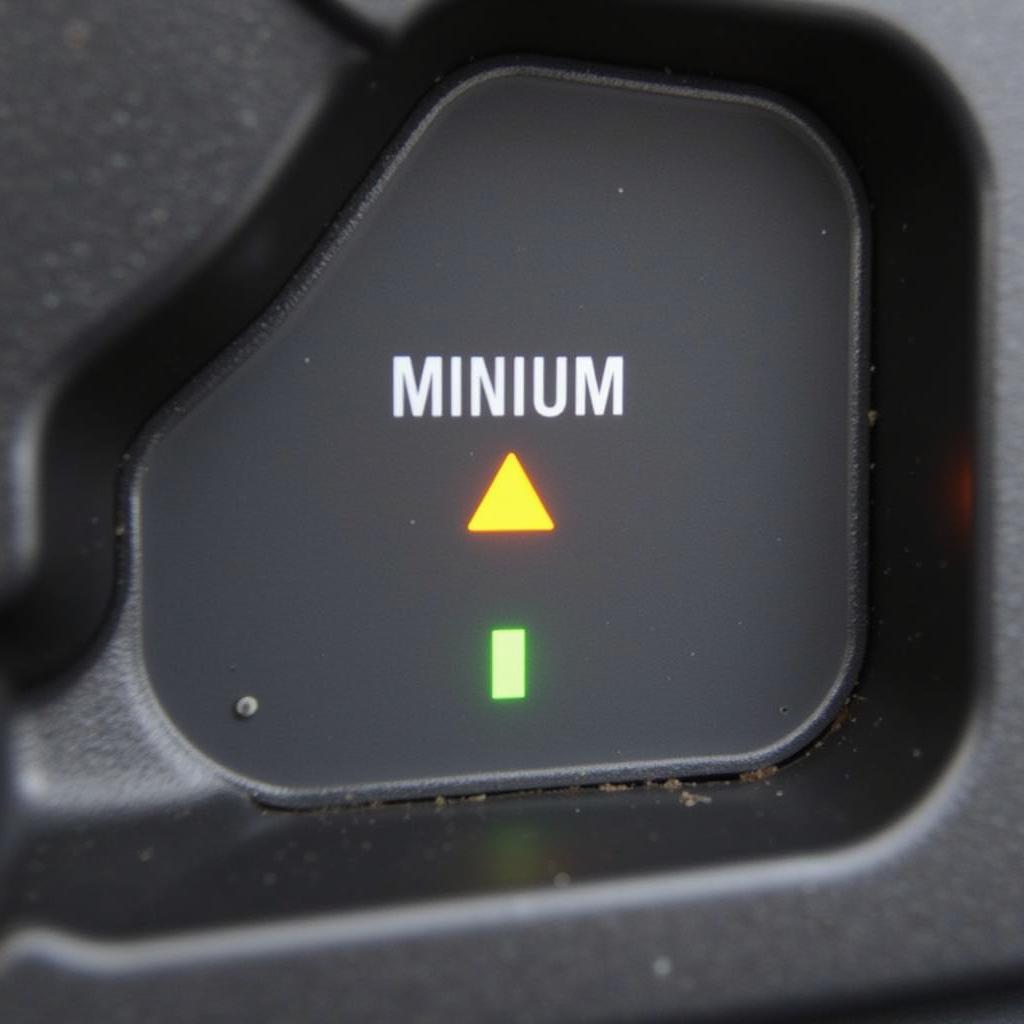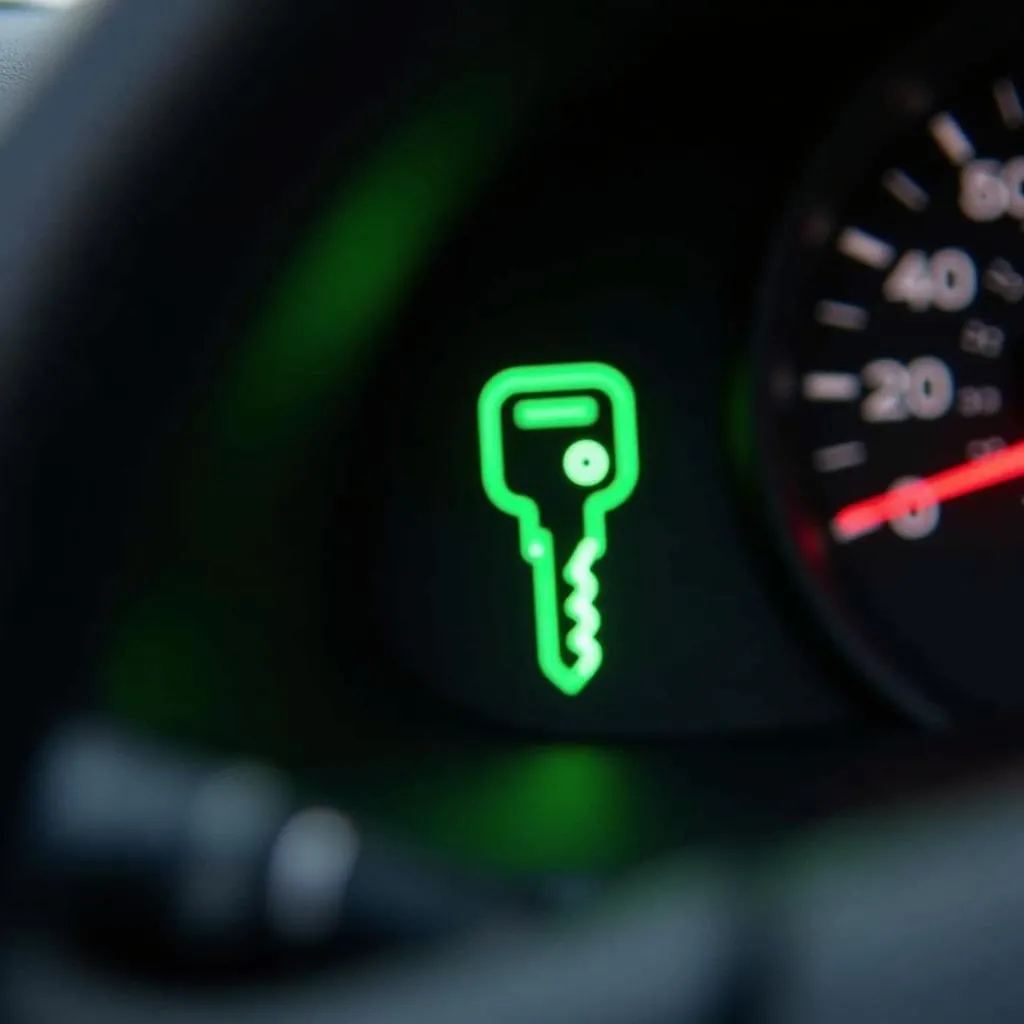The brake warning light on your 2004 Ford F-150 illuminating can be a nerve-wracking experience. It signals a potential issue with your braking system, demanding immediate attention. While sometimes it might be a minor glitch, understanding the underlying causes and knowing how to address them can save you from costly repairs and ensure your safety on the road. This guide will walk you through the common reasons behind a 2004 Ford F-150 brake warning light, how to diagnose the problem, and the possible solutions.
Deciphering the Warning: Why is My Brake Light On?
The brake warning light is designed to alert you about various issues within your F-150’s braking system. Here are some of the most common culprits:
- Low Brake Fluid Level: This is the most frequent cause. Brake fluid is the lifeblood of your braking system, and a leak or low fluid level can significantly compromise braking performance.
- Worn Brake Pads: Brake pads have wear indicators that make a squealing sound when they wear thin. If ignored, this can lead to the metal backing plate grinding against the rotors, triggering the brake warning light.
- Faulty Brake Light Switch: Located behind the brake pedal, this switch signals the brake lights to illuminate when you apply the brakes. A malfunctioning switch can disrupt this signal, leading to the warning light.
- ABS Issue: If the issue lies within the Anti-lock Braking System (ABS), a separate ABS warning light might accompany the brake warning light. This usually indicates a problem with the ABS module, wheel speed sensors, or related wiring.
- Parking Brake Engaged: While seemingly obvious, sometimes the parking brake might not be fully disengaged, causing the light to stay on.
 2004 Ford F-150 Brake Fluid Reservoir
2004 Ford F-150 Brake Fluid Reservoir
Troubleshooting Your 2004 Ford F-150 Brake Warning Light
Before you rush to a mechanic, there are a few checks you can perform yourself:
- Check Brake Fluid Level: Locate the brake fluid reservoir under the hood. Ensure the fluid level sits between the minimum and maximum markings. If it’s low, add the correct type of brake fluid as specified in your owner’s manual.
- Inspect Brake Pads: If you’re comfortable with basic car maintenance, you can visually inspect your brake pads. Look for significant wear or if the pad thickness is close to the wear indicator.
- Check Parking Brake: Ensure the parking brake is fully disengaged. Sometimes a slight bump can move the lever just enough to trigger the light.
When to Seek Professional Help
If the brake warning light persists even after these checks, or if you notice any of the following, it’s crucial to seek professional help:
- Soft or Spongy Brake Pedal: This indicates air in the brake lines, requiring immediate attention.
- Grinding Noise When Braking: A grinding sound usually means your brake pads are completely worn out and require replacement.
- Pulling to One Side When Braking: This can be a sign of uneven brake pad wear, a stuck caliper, or a problem with the hydraulic system.
 Worn Brake Pads on a 2004 Ford F-150
Worn Brake Pads on a 2004 Ford F-150
Remote Diagnostics and Software Solutions
In today’s technologically advanced world, remote diagnostics and software solutions are revolutionizing car repair. At Car Diag Tech, we specialize in offering remote diagnostic services for your 2004 Ford F-150.
How it works:
- Connect: Using a specialized device, you can connect your F-150’s onboard computer to our remote diagnostic platform.
- Diagnose: Our certified technicians can access your vehicle’s data remotely, pinpoint the exact cause of the brake warning light, and recommend the necessary course of action.
- Software Solutions: In some instances, the issue might be software-related. Our team can remotely install software updates, reprogram modules, or make necessary adjustments to resolve the problem.
2004 ford f 150 parking brake warning light fix
Why Choose Remote Diagnostics for Your 2004 Ford F-150?
- Convenience: Diagnose your vehicle from the comfort of your home or workplace.
- Speed: Get faster diagnosis and solutions compared to traditional methods.
- Accuracy: Our advanced diagnostic tools offer pinpoint accuracy in identifying the issue.
- Cost-effective: Remote diagnostics can often save you money compared to unnecessary trips to the mechanic.
The Importance of Prompt Action
“Ignoring a brake warning light is like playing Russian roulette with your safety,” says John Smith, a certified automotive technician with over 20 years of experience. “Brakes are your vehicle’s most crucial safety feature, and addressing issues promptly can prevent accidents and save lives.”
Conclusion
A brake warning light on your 2004 Ford F-150 should never be ignored. By understanding the potential causes, performing basic troubleshooting, and seeking professional help when needed, you can ensure your F-150’s braking system stays in top condition, keeping you and your passengers safe on the road. Consider the benefits of remote diagnostics and software solutions offered by Car Diag Tech for a faster, more convenient, and accurate diagnosis and repair experience.


